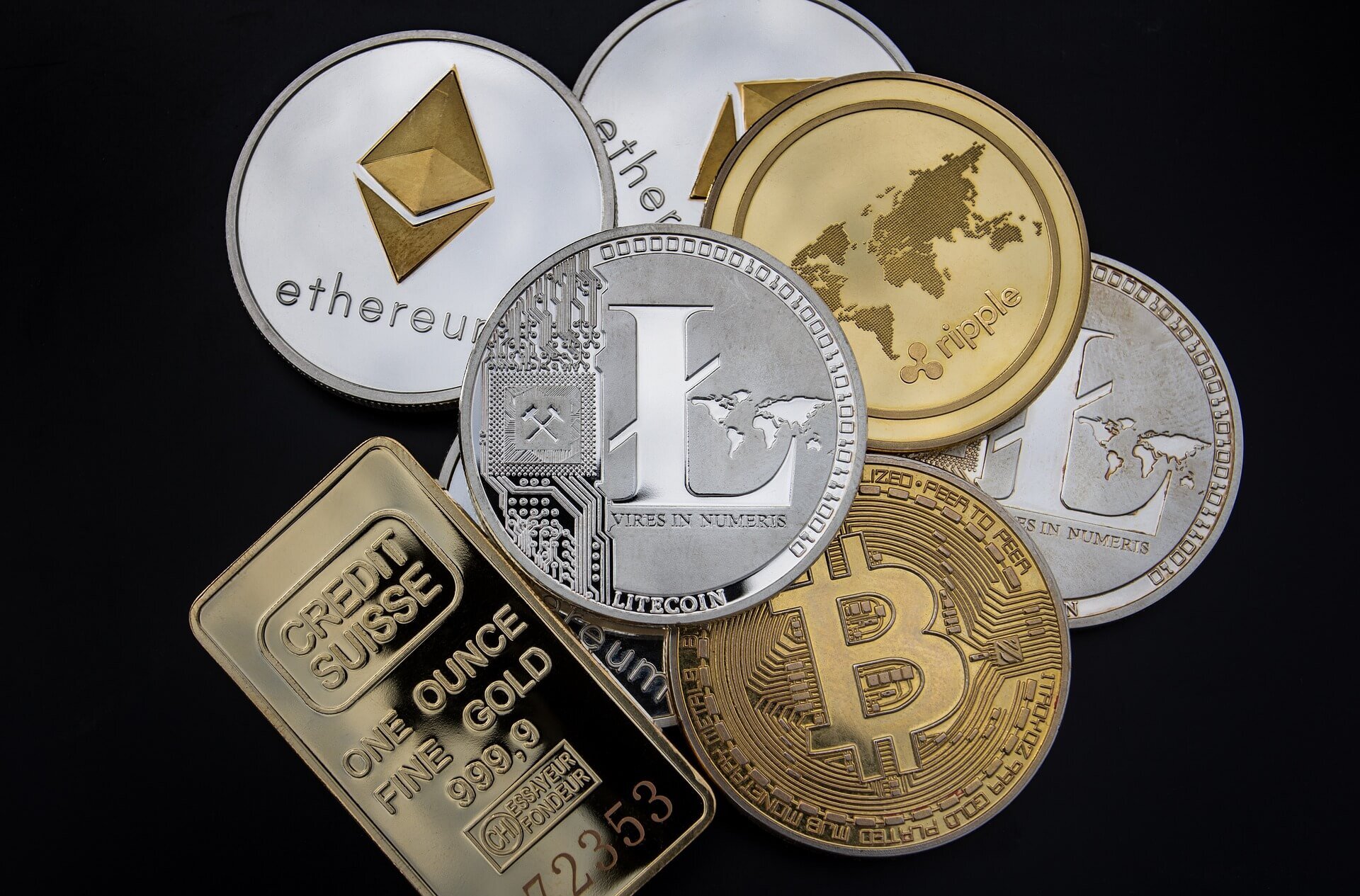how does cryptocurrency work
How does cryptocurrency work
What exactly are governments and nonprofits doing to reduce Bitcoin energy consumption? Earlier this year in the U.S., a congressional hearing was held on the topic where politicians and tech figures discussed the future of crypto mining in the U.S https://furplecs.com/ , specifically highlighting their concerns regarding fossil fuel consumption. Leaders also discussed the current debate surrounding the coal-to-crypto trend, particularly regarding the number of coal plants in New York and Pennsylvania that are in the process of being repurposed into mining farms.
A hard fork is a protocol upgrade that is not backward compatible. This means every node (computer connected to the Bitcoin network using a client that performs the task of validating and relaying transactions) needs to upgrade before the new blockchain with the hard fork activates and rejects any blocks or transactions from the old blockchain. The old blockchain will continue to exist and will continue to accept transactions, although it may be incompatible with other newer Bitcoin clients.
A 2020 EU report found that users had lost crypto-assets worth hundreds of millions of US dollars in security breaches at exchanges and storage providers. Between 2011 and 2019, reported breaches ranged from four to twelve a year. In 2019, more than a billion dollars worth of cryptoassets was reported stolen. Stolen assets “typically find their way to illegal markets and are used to fund further criminal activity”.
Before June 2021, China was the primary location for bitcoin mining. However, due to concerns over power usage and other factors, China forced out bitcoin operations, at least temporarily. As a result, the United States promptly emerged as the top global leader in the industry. An example of a gross amount of electronic waste associated with bitcoin mining operations in the US is a facility that located in Dalton, Georgia which is consuming nearly the same amount of electricity as the combined power usage of 97,000 households in its vicinity. Another example is that Riot Platforms operates a bitcoin mining facility in Rockdale, Texas, which consumes approximately as much electricity as the nearby 300,000 households. This makes it the most energy-intensive bitcoin mining operation in the United States.

Bitcoin cryptocurrency
Bitcoin is een gedecentraliseerde cryptocurrency die oorspronkelijk werd beschreven in een whitepaper uit 2008 door een persoon of een groep mensen, onder de alias Satoshi Nakamoto. Het werd kort hierna gelanceerd in januari 2009.
Natuurlijk kun je ook je mininghardware gebruiken op kleinere blockchains. (Daarbij is het wel handig om te vermelden dat het Ethereum-blockchain afstapt van het proof-of-work consensusmechanisme en dit betekent dat ETH over een paar maanden niet meer zal worden gedolven.)
TThe data at CoinMarketCap updates every few seconds, which means that it is possible to check in on the value of your investments and assets at any time and from anywhere in the world. We look forward to seeing you regularly!
De hashsnelheid is een cruciale barometer van hoe gezond de Bitcoin-blockchain momenteel is. Kort gezegd is dit een algemeen overzicht van de verwerkingskracht die op dit moment in het Bitcoin-netwerk te vinden is.
Mempooltransacties worden periodiek gewist wanneer een nieuw blok wordt toegevoegd aan de blockchain. Transacties die nog wachten in mempools worden alleen gewist (verwerkt) zodra ze voldoen aan de minimumdrempel voor transactiekosten.
Cryptocurrency meaning
On 10 June 2021, the Basel Committee on Banking Supervision proposed that banks that held cryptocurrency assets must set aside capital to cover all potential losses. For instance, if a bank were to hold bitcoin worth $2 billion, it would be required to set aside enough capital to cover the entire $2 billion. This is a more extreme standard than banks are usually held to when it comes to other assets. However, this is a proposal and not a regulation.
After the early innovation of bitcoin in 2008 and the early network effect gained by bitcoin, tokens, cryptocurrencies, and other digital assets that were not bitcoin became collectively known during the 2010s as alternative cryptocurrencies, or, “altcoins”. Sometimes the term “alt coins” was used, or disparagingly, “shitcoins”. Paul Vigna of The Wall Street Journal described altcoins in 2020 as “alternative versions of Bitcoin” given its role as the model protocol for cryptocurrency designers. A Polytechnic University of Catalonia thesis in 2021 used a broader description, including not only alternative versions of bitcoin but every cryptocurrency other than bitcoin. “As of early 2020, there were more than 5,000 cryptocurrencies. Altcoin is the combination of two words “alt” and “coin” and includes all alternatives to bitcoin.” : 14
The rewards paid to miners increase the supply of the cryptocurrency. By making sure that verifying transactions is a costly business, the integrity of the network can be preserved as long as benevolent nodes control a majority of computing power. The verification algorithm requires a lot of processing power, and thus electricity, in order to make verification costly enough to accurately validate the public blockchain. Not only do miners have to factor in the costs associated with expensive equipment necessary to stand a chance of solving a hash problem, they must further consider the significant amount of electrical power in search of the solution. Generally, the block rewards outweigh electricity and equipment costs, but this may not always be the case.
On a blockchain, mining is the validation of transactions. For this effort, successful miners obtain new cryptocurrency as a reward. The reward decreases transaction fees by creating a complementary incentive to contribute to the processing power of the network. The rate of generating hashes, which validate any transaction, has been increased by the use of specialized hardware such as FPGAs and ASICs running complex hashing algorithms like SHA-256 and scrypt. This arms race for cheaper-yet-efficient machines has existed since bitcoin was introduced in 2009. Mining is measured by hash rate, typically in TH/s. A 2023 IMF working paper found that crypto mining could generate 450 million tons of CO2 emissions by 2027, accounting for 0.7 percent of global emissions, or 1.2 percent of the world total

On 10 June 2021, the Basel Committee on Banking Supervision proposed that banks that held cryptocurrency assets must set aside capital to cover all potential losses. For instance, if a bank were to hold bitcoin worth $2 billion, it would be required to set aside enough capital to cover the entire $2 billion. This is a more extreme standard than banks are usually held to when it comes to other assets. However, this is a proposal and not a regulation.
After the early innovation of bitcoin in 2008 and the early network effect gained by bitcoin, tokens, cryptocurrencies, and other digital assets that were not bitcoin became collectively known during the 2010s as alternative cryptocurrencies, or, “altcoins”. Sometimes the term “alt coins” was used, or disparagingly, “shitcoins”. Paul Vigna of The Wall Street Journal described altcoins in 2020 as “alternative versions of Bitcoin” given its role as the model protocol for cryptocurrency designers. A Polytechnic University of Catalonia thesis in 2021 used a broader description, including not only alternative versions of bitcoin but every cryptocurrency other than bitcoin. “As of early 2020, there were more than 5,000 cryptocurrencies. Altcoin is the combination of two words “alt” and “coin” and includes all alternatives to bitcoin.” : 14
Cryptocurrency price
In January 2022, the Ethereum Foundation announced the decision to remove the “Ethereum 2.0” terminology to “save all future users from navigating this confusing mental model.” It went on to explain that the previously-referred-to terms of “Ethereum 1.0” would be branded the “execution layer,” while “Ethereum 2.0” will be called the “consensus layer”. This is ultimately to provide a more accurate version of the Ethereum roadmap.
Solana has received much praise for its speed and performance, and has even been tipped as a rival that can compare to Ethereum and challenge the dominant smart contract platform. However, the network has been plagued by repeated outages that have impaired its price and aspirations to be the “Visa of crypto.” Furthermore, its ecosystem is accused of favoring venture capital investors with unfair tokenomics.
In its original state, a cryptocurrency address consists of a long string of numbers and letters designed to be read by computers. It may look like this — “0xDC25EF3F5B8A186998338A2ADA83795FBA2D695E” — making it confusing at times to read, and in some cases even leading to loss of funds.
After the Ethereum 2.0 Beacon Chain (Phase 0) went live in the beginning of December 2020, it became possible to begin staking on the Ethereum 2.0 network. An Ethereum stake is when you deposit ETH (32 ETH is required to activate validator software) on Ethereum 2.0 by sending it to a deposit contract, thus helping to secure the network by storing data, processing transactions and adding new blocks to the blockchain. At the time of writing in mid-September 2021, the Ethereum price now for 32 Ether is roughly $116,029. The amount of money earned by Ethereum validators right now is a return of 6% APR, which equates to around 1.91952 ETH, or $6960 in Ethereum price today. This number will change as the network develops and the amount of stakers (validators) increase.
The success of Dogecoin is closely intertwined with Elon Musk’s passion for it. Musk began tweeting about Dogecoin in early 2021, sharing a Lion King DOGE meme. That kickstarted a furious DOGE rally — with temporary dips — that culminated in Musk’s appearance on Saturday Night Live.

